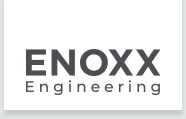- Home
- ENOXX Engineering
- Technology
- Laser cutting
Laser cutting
When a component is manufactured, an optimum technology mix must be ensured for different components and manufacturing stages. That is why we carefully weigh up the various factors involved when selecting suitable technology.
Laser cutting forms an important part of this technology mix. It offers a number of advantages over punching in component manufacture. This is particularly the case if special properties are required.
The advantages of laser cutting at a glance:
- Low minimum lot sizes can be achieved
- Exact cutting patterns, even for complex shapes
- Clean-cut edges, so no complex reworking required
Precise, clean, fast

Our focused high-performance lasers are used when complex contours, precise processing or three-dimensional openings are required. Another field of application is contactless or virtually force-free workpiece machining. Using laser beams allows us to achieve maximum cutting quality without damaging the properties of the processed material. Almost all conceivable shapes are possible – some of our components would not even be feasible without laser cutting.
Laser cabins

The Trumpf TruLaser Cell 7040 features a solid-state laser source with a laser output of 4 kW. It enables us to meet customer requests even sooner since it is capable of both cutting and laser welding.
TruLaser Cell 7040 with TruDisk 4001
- Working range 4000X1500x750
- Panel thickness between 0.4 mm and 5 mm
Laser cutting: how it works

The principle of laser cutting is simple: solid bodies are cut using a continuous or pulsed laser beam. The actual physical process is called ablation and refers to the removal of material by means of heat. The laser beam can be focused very accurately, ensuring the energy acts precisely within the desired area. The surrounding material is only exposed to marginal forces during this process.



